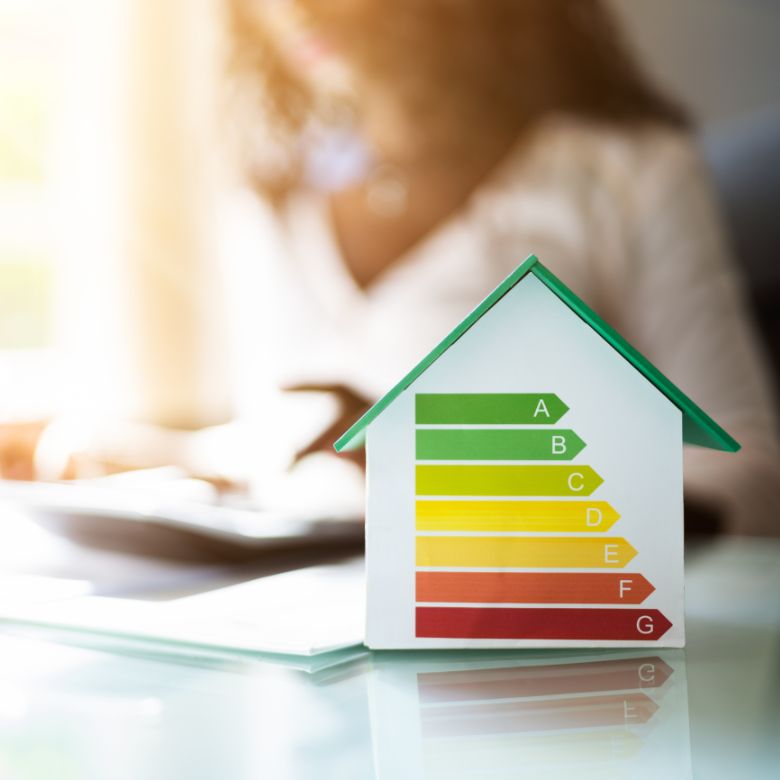How much heat will escape through the walls and how much through the roof or windows? We do not have to base on estimates here. In order to precisely calculate the heat losses for each building envelope component and material, we can use the thermal conductivity coefficient (so-called U-factor). How to calculate it and why is it so important? Read this article and find out!

What is the thermal conductivity coefficient?
The U-factor is specified by, for example, manufacturers of door and window joinery and also calculated when designing new buildings. What does that term stand for? The simplest definition of the thermal conductivity coefficient is the following: it is the amount of energy (expressed in watts) that penetrates through 1 m2 of the surface of a building envelope component when the temperature difference between its both sides is 1 kelvin (K). The building envelope components referred to in the definition are elements of the building that are in contact with the outside air: walls, roof, windows and doors.
The term “thermal conductivity” can seem rather abstract. In fact, the U-factor provides reliable and universal information on whether a particular envelope component will ensure appropriate heat insulation.
How to calculate the U-factor? Get to know the thermal conductivity formula
Door and window manufacturers are required to declare the thermal conductivity coefficient for their products. But what about other envelope components, like walls or the roof, that may be built of many types of materials and additionally differ in thickness? You can calculate the thermal conductivity value by yourself. You will only need one key parameter: the λ (lambda) index for the particular type of construction material. That information can always be found in the documentation made available by the manufacturer. Apart from that value, to calculate the thermal conductivity coefficient, you have to also know the thickness of the material.
This will allow you to calculate the thermal resistance (R). This is done according to the following formula: R = d/λ, where d is the thickness expressed in metres and λ is the thermal conductivity coefficient expressed in W/K (watt/kelvin).
How is thermal resistance related to the thermal conductivity coefficient? The latter is the inverse of the former. It is then enough to make a simple calculation: divide 1 by the thermal resistance value according to the formula U = 1/R. The result of that equation will be the U-factor.
What are the required thermal conductivity values for building envelope components?
Such calculations are very useful in practice. Most of all, they allow to compare the building parameters to the standards set out in the technical conditions to be met by buildings and their location. We should know that those values (applicable for new real estates) are increasingly more restrictive. Since 2021, the U-factor must be:
- for external walls: no more than 0.2 W/m2K;
- for windows and balcony doors: no more than 0.9 W/m2K,
- for roof windows: no more than 1.1 W/m2
We should take into account that the required heat conductivity values will keep changing in the future. They will be gradually reduced.

Why is calculating the U-factor so important?
We should know the heat conductivity value for individual building elements not only to ensure that our design meets the regulations. There is one more reason why we should aim at reducing the heat loss and provide good insulation. If we lower the U-value, the building may become more energy efficient and thus more ecological and less expensive to maintain. An appropriately thick roof or walls made of materials with good parameters will protect your home against the cold and prevent the warm air from getting outside. This implies less heat energy required for ensuring thermal comfort, as your heating equipment can work at a lower power level and consume less electricity, gas or other utilities.
What can we do to improve the building’s thermal conductivity?
The parameters related to thermal conductivity can always be improved, even if the building is old and heavily damaged. This does not need to entail a serious refurbishment or interference in its structure.
The simplest way to quickly reduce thermal conductivity is to seal thermal bridges, i.e. the areas through which the warm air escapes outside the building. How to do that? Spray insulation with PUR foam will bring about excellent effects. Polyurethane easily penetrates even into the tiniest, hardly accessible gaps, plus it is resistant to moisture, mould or fungi. PUR foam can be used as thermal insulation of roofs, ceilings, foundations or external walls in new buildings as well as when additionally insulating or thermally retrofitting older properties.
To improve the thermal conductivity coefficient on larger areas, you should use PIR thermal insulation panels, made of polyisocyanurate. They can be quickly cut to size and installed on a wall, ceiling, roof or floor.
PIR foams show a high thermal insulation index. In this respect, they outperform other popular materials used for building insulation: styrofoam or mineral wool. They are also thinner; the layer does not need to be so thick to provide efficient insulation of walls and other elements. With their resistance to fire and mechanical damage, PIR insulating panels can be used not only in residential buildings but also in more challenging environments, such as production halls or warehouses.
We should remember that a well made insulation reduces the amount of heat escaping outside, which can translate into savings. This is why we should invest in high-quality materials that will ensure adequate properties, long useful life, and safety. The PCC Group is one of the well-known suppliers of PIR panels, PUR foams and other construction or heat insulation materials.
Please check out our offer of construction chemicals that is available on the Product Portal!
- https://www.sciencedirect.com/topics/chemical-engineering/heat-transfer-coefficient
- https://unacademy.com/content/kerala-psc/study-material/fermentation-technology/overall-heat-transfer-coefficient/
- https://www.muratorplus.pl/technika/izolacje/wspolczynnik-przenikania-ciepla-od-czego-zalezy-wspolczynnik-u-przegrod-budowlanych-aa-iTn4-bLg6-hCpS.html